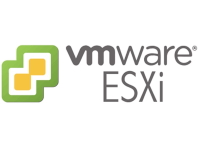
- Disable hyperthreading in a vm esxi 6.5 update#
- Disable hyperthreading in a vm esxi 6.5 Patch#
Select the VMFS Datastore, which stores the shared vmdk file that you created earlier for the first VM. Then you need to add a new disk (Existing Hard Disk) in the settings of the second virtual machine. In the same way, you need to add a new SCSI controller to another virtual machine (Node 2). If you enabled VMWare Fault Tolerance protection for a virtual machine, the multi-write VMDK mode is enabled automatically for virtual disks.
Disk mode: Independent – Persistent – in this mode, you can’t create snapshots for a virtual drive you want to share. Virtual Device Node: select the SCSI controller created earlier. You can convert thick provision lazy zeroed disk to thin Disable hyperthreading in a vm esxi 6.5 Patch#
You can use other disk provisioned types if your shared vmdk file is located on the vSAN 6.7 Patch 01 datastore).
Disk Provisioning: select Thick provision eager zeroed (shared virtual disk cannot be zeroed thick or thin provisioned. Location: you need to select a shared datastore name that will store the vmdk file. Next, you need to add a new virtual disk on the first VM (Add New Device > Hard Disk > Add) with the following disk settings: Nonemode is used only for not clustering Multi-writer drives. Physical - used when you need to share vmdk file between VMs on different ESXi hosts (if you have multiple ESXi hosts in VMWare vSphere cluster then you must select this bus sharing mode). Virtual - if you want to share a virtual disk between VMs on the same ESXi host. Now you need to choose the SCSI Bus sharing mode: 
Be sure to create a new SCSI controller, don’t use a default SCSI 0 controller. Select LSI Logic SAS as a type of SCSI controller. To add a new virtual device select Add New Device > SCSI controller in the dropdown list, and press the Add button. In the vSphere Client inventory select the first virtual machine (Node 1), and select Actions > Edit Settings. On both virtual machines, you need to add a new SCSI controller. These hosts running the two VMs (node1 and node2) you want to add a shared virtual disk. Suppose the shared external storage (connected to each ESXi host using iSCSI or Fiber Channel SAN) has already been presented to all VMWare ESXi 6.5 hosts. Sharing a VMDK Disk Between Two Virtual Machine on ESXi Hosts
Virtual disks in multi-writer mode must not be connected to the virtual NVMe controller. Disable hyperthreading in a vm esxi 6.5 update#
Snapshot creation and Changed Block Tracking technology are not supported (only for independent-persistent disk starting from vSphere 5.1 update 2). You can’t suspend a VM with shared disk. Hot-extend is currently supported only for VMFS flat virtual disks without snapshots opened in persistent mode) You cannot expand such a VMDK disk online (if you try to increase the size of the vmdk, you get the error: The disk extend operation failed: The virtual disk requires a feature not supported by this program. Those, the Multi-Writer VMDK technology is needed just for clustering, and it’s impossible to use it as a shared disk with automatic file synchronization If you try to write data to such a vmdk from the guest operating system (for example, creating a folder), then this data (folder) will be visible only on the host that created it. vMotion is only supported for Oracle RAC cluster with up to 8 ESXi hosts You can migrate between ESXi hosts only powered off virtual. You won’t be able to perform the online migration of running VMs with shared disk to another host (vMotion), or datastore (Storage vMotion). The main restrictions of shared VMWare disks in Multi-Writer mode: In most cases, this shared disk operation mode is used in cluster solutions Oracle RAC and Microsoft MSCS (Microsoft Cluster Service) clusters. Virtual disks, which must be available simultaneously in several VMWare virtual machines, use the Multi-writer technology (available starting from VMware ESXI 5.5 and newer). Multi-writer is also used for VMWare Fault Tolerance when primary and standby virtual machines access a shared vmdk file simultaneously. 
The Multi-Writer option ensures that a guest host clustering application (such as Oracle RAC or Microsoft MSCS) doesn’t cause data loss when accessing from two or more virtual machines. This feature is called Multi-writer VMDK. However, there is a VMware technology that allows sharing VMFS-backed disks between several VMs. This prevent VMs from accessing other virtual machines disks, and avoid data corruption or loss. vmdk file simultaneously (locks are used). By default VMFS, NFS datastores, vSAN are not allowing multiple virtual machines to access the same. VMware VMFS is a clustered file system shared between multiple ESXi hosts.






 0 kommentar(er)
0 kommentar(er)
